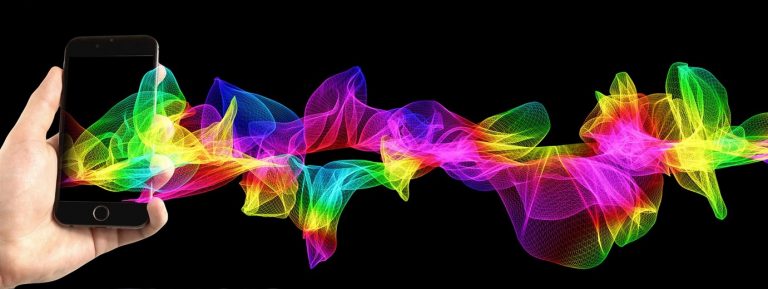All set with new aspirations for a promising new year? Have you checked out the latest trends in the burgeoning IoT ecosystem, to enable your aspirations? To make the most out of the opportunities lying ahead, it is extremely crucial to know about the latest IoT Trends out there, which helps you set a budget for and leverage the right technology to propel your business forward.
Gartner predicts the number of ‘Connected Things’ in use will hit 14.2 billion in 2019 and grow to 25 billion by 2021.
In the IoT milieu, one can fathom about the deep investments, fueling innovations that are not just confined to the likes of the Smart Home System but are sprawling rapidly to the large-scale Industrial Applications.
Turning imagination into reality, the biggest Tech Show, CES 2019, this time showcased a horde of quirky yet highly functional smart products powered by IoT like Bythewave’s connected tracker called ‘Ride’ that coaches riders on how to surf, skate and snowboard; Parade Connect’s range of connected and smart factory shoes which come with built-in AI to ensure double safety for isolated workers; a Sniffy device with old factory cartridges that can use a fragrance or flavor to enhance the shopping experience; Foxy’s smart sock made for newborn babies that help monitor baby’s sleep, body temperature and protect them from fatalities such as SIDS (sudden infant death syndrome).
Are you ready to get up to speed with the latest IoT Trends of 2019? Read On
Here’s a list of five most significant IoT trends that organizations can expect to see this year:
5G-driven Innovations will Reinforce Connectivity – Since the Internet of Things is all about connectivity, the advancements enabled by the growth of 5G networks are setting up boundless opportunities in the space of Cybersecurity, Connected Vehicles, and Smart Cities. The 5G Technology – connoted as 10 times faster, with 50 times less latency and backed by 1000 times the capacity of 4G – is bringing a billion more connected devices into the world making way for disruptive technologies and the new business opportunities.
Adoption of Cybersecurity Defenses along with Automation – The Internet of Things is growing at an unprecedented pace and is establishing its footprint across industries like Manufacturing, Transport/Logistics, Public Safety/Emergency & Smart Cities. This massive growth of IoT devices will create complexity in the entire IoT ecosystem of partners contributing to create end-to-end services. It is quite obvious that many devices are vulnerable to security threats & Cyber Attacks. attacks. Hence, automated security compliance and intrusion prevention will see wider adoption, majorly assisting organizations in maintaining more secure uptime.
Edge Computing to Overcome Cloud Challenges: With the continuous growth of IoT devices, the real challenge comes in terms of processing large volumes of data. Since IoT is about processing device-generated data that is useful and cloud computing is about using data from centralized computing and storage, it becomes very difficult to manage a mammoth amount of data. Here comes Edge Computing, which performs data processing at the edge of the network, close to the source of the data. This technology will be indispensable, dividing the process between the edge and the centralized system by means of public cloud such as AWS Greengrass, Google Cloud IoT Edge, Microsoft IoT edge, etc.
Cisco Systems forecasts that cloud traffic is likely to gain momentum and grow nearly fourfold by 2020, increasing from 3.9 zettabytes (ZB) per year in 2015 (the latest full year for which data is available) to 14.1 ZB per year by 2020.
Bundled Service Offerings will wake up the sleepy IoT Market– This year, major players from utilities, insurance, and FMCG proceed with a different approach with their ongoing services enabled by smart devices. Industry Biggies will offer subscription-based offerings. For e.g. Verizon’s Hum– an automobile service – has combined roadside assistance, maintenance monitoring, and driver monitoring, using two in-car devices, for $20 per month devoid of any upfront device costs. Now, vendors will use the upfront discounts to attract more customers in the hope that they will remain in the value chain once they get the significant benefits of the bundled services.
Smarter Internet of Things– Adding intelligence makes sense of the massive amount of data collected from the connected devices and thus increases its value for business. With the amalgamation of Artificial Intelligence and Machine Learning capabilities in the IoT sensors, smart devices are becoming Intelligent. One such example is the WiFi speaker (Echo Dot, Google Home) equipped with AI & ML intelligence.
You can also check- How Machine Learning Seems Valuable in the IoT Realm?
Since the IoT is seemingly permeating in all aspects of our lives, it is no longer a futuristic technology. It has now become an inseparable backbone of today’s data-driven economy, which can be seen in the above plopped up IoT trends – putting more emphasis on technologies that are making better use of data gathered.
What’s your standpoint in the budging bastion of IoT? How will trends impact new and innovative use cases in the areas of your business? We’d love to hear what challenges and inconveniences smart devices are solving for you, with the analysis of information collected.



